Shaping the Rules for Kings of War: Third Edition
8th Oct 2019
Rob Burman
We’ve got a special guest for today’s blog – Jason Moorman from the esteemed Kings of War Rules Committee is here to talk about how they approach development on Third Edition. Over to you Jason…
Since Mantic announced that third edition was coming this year, there has been a lot of talk about the changes to the core rules, with spoilers splattered across blog posts, videos, and podcasts throughout the tabletop world. Very little, though, has been said about the process of writing the rules and deciding what changes would be made. I thought I’d take a moment to pull back the curtain and give a peek at how those of us on the Rule Committee went about writing the new edition.
Mantic informed the RC that Third Edition would be released in 2019 well over a year ago, so we began our prep work even before we had hard deadlines in place. We started by creating a living rulebook that integrated all existing errata and Clash of Kings changes into the second edition text. We kept this up to date so rules changes wouldn’t slip through the cracks when it came time to write third properly. Then, when Mantic officially told us to begin work on Third, we started by rewriting sections in order to make sure all the frequently asked questions were included in-text in a clear and concise way. This created some messy or rambling rules sections that we then cleaned up, taking the opportunity to also create new terms to cut down on wordiness (e.g. replacing Second Edition’s “non-allied” with third edition’s “Core”).
This process gave us something that could reasonably have been called edition 2.5. It was a cleaned-up rulebook that accurately reflected how the game was being played in late 2018. Third Edition, however, gave us the opportunity to not only clean up the rules, but to improve gameplay. We asked ourselves where the game could be cleaner, richer, and better prepared for moving the game forward. Let’s look at a few of those places.
Engagement
The five of us agreed that easily the messiest part of almost any game of Kings of War is regrouping after a charge that doesn’t rout. Since Second Edition came out, the rules governing that 1” fallback have become increasingly complex. In some games sorting out which units falls back and how far they fall back takes up as much time as the actual combats. There aren’t a lot of tactics involved in shuffling units 1”, just steps to mindlessly follow. We felt we could do better.
Our solution was to simply get rid of the fallback all together and leave units Engaged after combat. No more pushing your units back 1”, or as close to 1” as possible. No more forcing the defending unit to fall back 1” because the attacker can’t. Units simply stay in contact. Then, if the other player doesn’t want to remain Engaged, they can simply Disengage on their turn by moving their unit out of contact with the enemy.
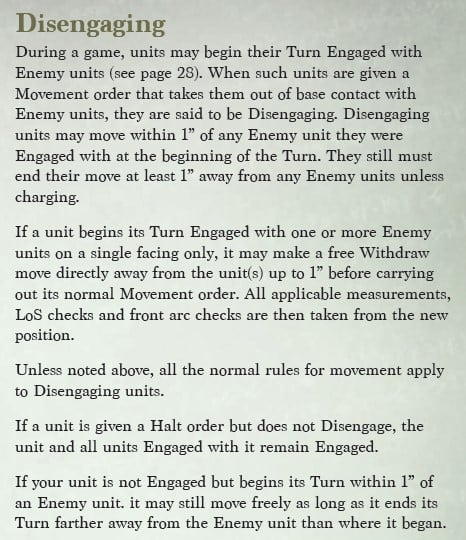
Generally, we were happy with this solution, but we worried that this may result in the loss of some tactical options created by the 1” fallback. We added a free Withdraw move to make sure we didn’t inadvertently remove depth of play while streamlining. Basically this conditionally moves the 1” fallback into the other player’s turn and makes it optional.
Both internal RC playtests and the larger group of playtesters found this to be an elegant solution to a messy problem that reduced game times considerably.
Individuals
Like a lot of the community, we felt heroes can be a bit dull in Kings of War. One general is much like another, and many options rarely see play time at all. We wanted to add a bit of depth to Individuals without slipping into so-called ‘Herohammer’. We found a couple of ways to do this.
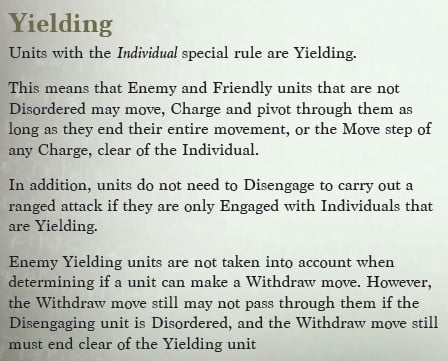
First, we created two tiers of combat Individuals. Most Individuals are Yielding, meaning, among other things, that other units may move through them under normal circumstances. The average flagger or wizard can’t stop a horde of Paladins from moving freely about the battlefield.
On the other end of the spectrum, however, are the Mighty Individuals, the impressive warriors that are capable of shifting the tide of the battlefield on their own. These individuals simply don’t follow the rules for Yielding.
To add more flavor to specific types of Individuals and further add to the distinct feel of some Heroes we also added Auras. Aura-like effects had already been given to some heroes through the Clash of Kings books. Third gave us a chance to expand on the idea across armies.
Preparing for the Future
We wrote third edition with an awareness that we will be adding in new units, new abilities, and new spells in the years to come. We worked to put systems in place that would make integrating these new changes as easy as possible going forward. A good example of this is spellcasting tiers.
We found throughout Second Edition that it was difficult to introduce new spells because a spell that was balanced when taken by a 120 point spellcaster suddenly seemed broken when taken by three 50 point spellcasters. Even Legendary spells were sometimes too powerful on cheaper casters. To get around this going forward, we’ve introduced Spellcaster tiers. Simply put, each spellcaster in the game has been assigned a numerical value reflecting how powerful they are. In future supplements this allows us to restrict spells to more powerful Spellcasters if we feel the need to do so, or to give more powerful versions of a spell to more powerful Spellcasters.
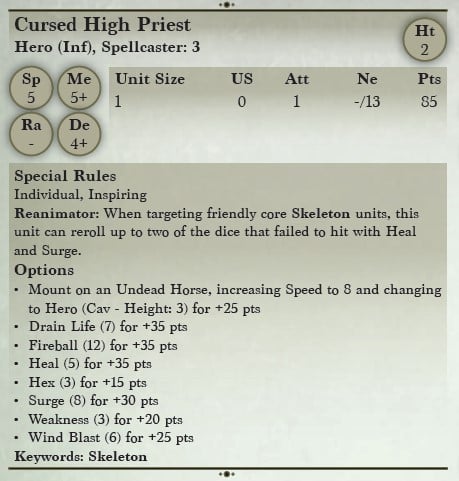
Though it is neither obvious nor explicit, we actually used Spellcaster tiers to determine what spells to give the Spellcasters in the book, and to determine how powerful those spells would be. So, for instance, the Tier 3 Empire of Dust Cursed High Priest has more and better spells than a tier 1 Goblin Wiz.
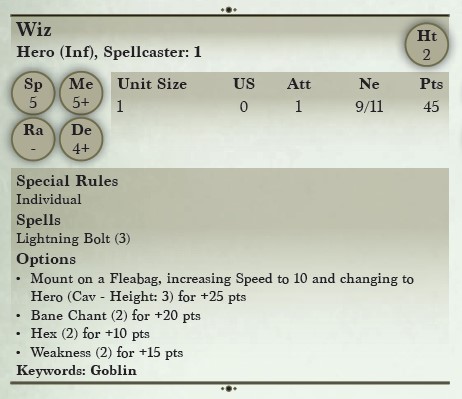
Another method of future proofing Kings of War, is the introduction of keywords. Below each unit entry are a selection of highlighted words. Although at the moment, many of these do not have an effect in Third Edition, they may become important when we introduce elements such as formations (which will be returning once the meta has settled down), new spells or special rules. So stay tuned!
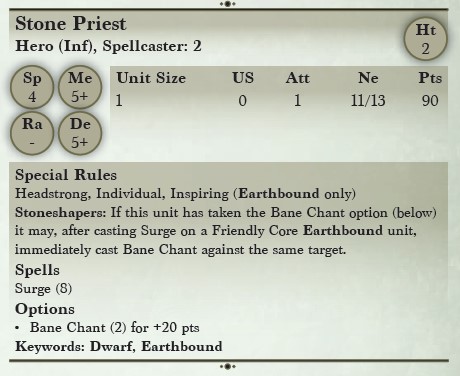
Well, hope you enjoy his glimpse behind the RC curtain. We’re all really excited about the changes in Third Edition and can’t to see all our hard work in your hands soon!

 GBP
GBP  EUR
EUR  USD
USD